
Odonata is an order of predatory flying insects that includes the dragonflies and damselflies. The two groups are distinguished with dragonflies usually being bulkier with large compound eyes together and wings spread up or out at rest, while damselflies are usually more slender with eyes placed apart and wings folded together along body at rest. Adult odonates can land and perch, but rarely walk.
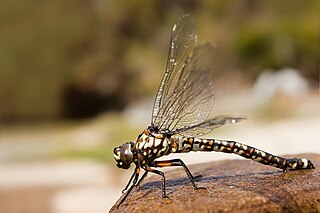
The Aeshnidae, also called aeshnids, hawkers, or darners, is a family of dragonflies, found nearly worldwide. The family includes some of the largest dragonflies.

The petaltails of the family Petaluridae are among the most ancient of the extant true dragonflies, having fossil members from as early as the Jurassic, over 150 million years ago.
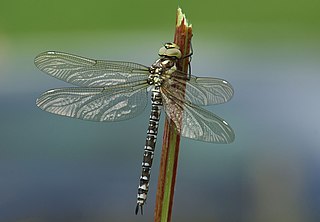
Aeshna, or the mosaic darners, is a genus of dragonflies from the family Aeshnidae. Species within this genus are generally known as "hawkers" or "darners".
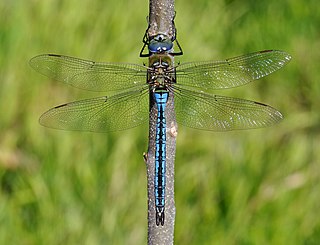
The emperor dragonfly or blue emperor is a large species of hawker dragonfly of the family Aeshnidae. It is the bulkiest dragonfly in most of Europe, including the United Kingdom, although exceeded by the magnificent emperor and in length by females of the golden-ringed dragonfly.

The giant Hawaiian darner, also known as the giant Hawaiian dragonfly or pinao, is a species of dragonfly in the family Aeshnidae. It is one of two species of dragonfly that is endemic to the Hawaiian Islands. It is found near streams and wetlands on all islands of the archipelago and it has a wide altitude range, but is particularly common at higher elevations.

Petalura gigantea, the giant dragonfly or south-eastern petaltail, is a species of dragonfly in the family Petaluridae from southeastern Australia. Males have body length of 6–7.5 cm (2.4–3.0 in) and a wingspan up to 11 cm (4.3 in), while females have body length of 8–9 cm (3.1–3.5 in) and a wingspan up to 12.5 cm (4.9 in). This makes it a very large species of dragonfly, although it is exceeded by a few other species, including the closely related northeast Australian giant petaltail.
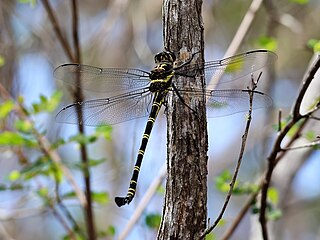
Petalura ingentissima, the giant petaltail, has been described as the world's largest dragonfly, with a wingspan of 160 mm. It is found in Queensland, Australia.

Anaciaeschna is a genus of dragonflies in the family Aeshnidae. Species of Anaciaeschna are found in Africa, Asia and Australia.
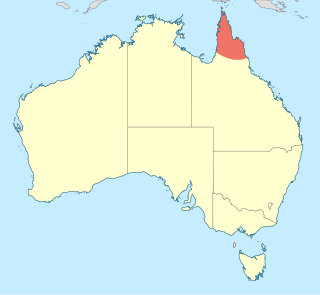
Petalura pulcherrima is a species of Australian dragonfly in the family Petaluridae, commonly known as a beautiful petaltail. It is a very large and slender dragonfly, mostly black or dark brown with yellow markings and its eyes widely separated on top of its head. It has clear wings and a very long, narrow pterostigma.

Petalura is a genus of very large dragonflies in the family Petaluridae. Species of Petalura are brown or black with yellow markings and usually clear wings. The anal appendages of the males are broad and leaf-like giving them their common name of petaltails. They are endemic to south-western and eastern Australia.

Anax guttatus, the pale-spotted emperor or lesser green emperor, is a dragonfly of the family Aeshnidae.
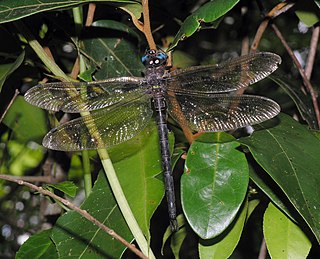
Tetracanthagyna is an Asian genus of dragonflies in the family Aeshnidae.

Gynacantha dravida, also known as Indian duskhawker or brown darner, is a species of dragonfly in the family Aeshnidae. It is found in India and Sri Lanka.
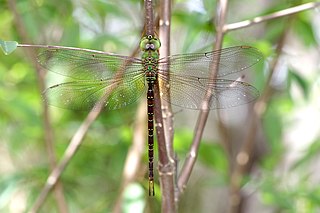
Gynacantha rosenbergi is a species of dragonfly in the family Aeshnidae, known as the grey duskhawker. It inhabits still waters and is found in New Guinea, Indonesia, through parts of northern Australia, as well as islands in the south Pacific.
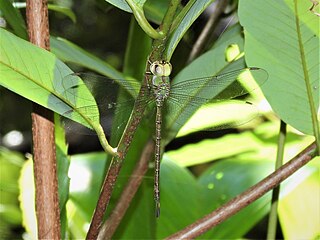
Gynacantha dobsoni is a species of dragonfly in the family Aeshnidae, known as the lesser duskhawker. It inhabits ponds and swamps and is found in northern Australia.

Gynacantha kirbyi is a species of dragonfly in the family Aeshnidae, known as the slender duskhawker. It is found in northern Queensland, Australia, the Maluku Islands, Tanimbar and New Guinea.

Gynacantha mocsaryi is a species of dragonfly in the family Aeshnidae, known as the paddle-tipped duskhawker. It is found in northern Queensland, Australia, the Maluku Islands and New Guinea.

Gynacantha bayadera, parakeet darner or small duskhawker, is a species of dragonfly in the family Aeshnidae. It is found from India to South China and northern New Guinea. This is a crepuscular species which probably breeds in forested swamps and marshy areas, or in forest pools.





















